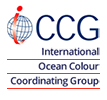The IOCCG bibliography is updated periodically when new references are submitted by readers, especially references that are published open access. Another useful ocean colour bibliography is the searchable Historic Ocean Colour Archive assembled by Marcel Wernand, with articles and books written between the 17th and early 20th century.
If you would like to submit a peer-reviewed open access publication to be included in the Ocean Colour Bibliography, please send the reference to Raisha Lovindeer using the following format: Lastname1, Initials1., Lastname2, Initials2., etc. (DATE). Full title of publication, Journal Abbreviation, Volume, Page numbers, DOI as a link. Please also check that the reference is not already in the database (search by first author). It is not necessary to send the PDF file as an attachment. Note that only peer-reviewed articles will be accepted.
If you would like to view recently-published papers, enter the current year in “Search by Keyword”. You can also search the database using keywords or the author’s last name. For papers dealing with Remote Sensing of Marine Litter and Debris, use the keyword “RSMLD”. You can also view the Datasets Bibliography for remote sensing and marine litter and debris.
Bibliography
Hu, C. (2011). An empirical approach to derive MODIS ocean color patterns under severe sun glint. Geophys. Res. Lett., 38, L01603, doi:10.1029/2010GL045422.
Hu, C. (2021) Remote detection of marine debris using satellite observations in the visible and near infrared spectral range: Challenges and potentials. Remote Sensing of Environment, 259, 112414, https://doi.org/10.1016/j.rse.2021.112414
Hu, C. (2022). Remote detection of marine debris using Sentinel-2 imagery: A cautious note on spectral interpretations. Marine Pollution Bulletin, 183, 114082, https://doi.org/10.
Hu, C. (2022). Sea Snots in the Marmara Sea as Observed From Medium-Resolution Satellites. IEEE Geosci. & Remote Sens. Lett., 19, 1504905, doi:10.1109/LGRS.2022.3173997.
Hu, C. (2022). Hyperspectral reflectance spectra of floating matters derived from Hyperspectral Imager for the Coastal Ocean (HICO) observations. Earth Syst. Sci. Data, 14, 1183–1192, https://doi.org/10.5194/essd-14-1183-2022.
Hu, C. (2024) A depth-invariant index to map floating algae: a conceptual design, Remote Sensing Letters, 15:1, 1-9, https://doi.org/10.1080/
Hu, C., Carder, K., and Muller-Karger, F.E. (2000). Atmospheric correction of SeaWiFS imagery over turbid coastal waters: a practical method. Remote Sens. Environ., 74: 195-206.
Hu, C., Carder, K.L., and Muller-Karger, F.E. (2000), Atmospheric correction of SeaWiFS imagery: assessment of the use of alternative bands. Applied Optics, 39(21): 3573-3581.
Hu, C., Carder, K.L., Muller-Karger, F.E., (2001) How precise are SeaWiFS ocean color estimates? Implications of digitization-noise errors. Rem. Sens. Environ., 76: 239-249.
Hu, C., Feng, L., Hardy, R. F., and Hochberg, E. J. (2015). Spectral and spatial requirements of remote measurements of pelagic Sargassum macroalgae, Remote Sens. Environ., 167, 229-246, http://dx.doi.org/10.1016/j.rse.2015.05.022
Hu, C., Feng, L., Lee, Z-P., Davis, C.O., Mannino, A., McClain, C.R., and Franz, B.A. (2012). Dynamic range and sensitivity requirements of satellite ocean color sensors: learning from the past. Applied Optics, 51(25): 6045-6062. [PDF file].
Hu, C., Hackett, K.E., Callahan, M.K., Andréfouët, S., Wheaton, J.L., Porter, J.W., Muller-Karger, F.E. (2003). The 2002 ocean color anomaly in the Florida Bight: A cause of local coral reef decline? Geophys. Res. Lett., 30(3): 10.1029/2002GL016479 15 February 2003
Hu, C., L. Feng, and Z. Lee (2013). Uncertainties of SeaWiFS and MODIS remote sensing reflectance: Implications from clear water measurements. Remote Sens. Environ., 133:163-182. [PDF file].
Hu, C., L. Qi, D.C. English, M. Wang, K. Mikelsons, B.B. Barnes, M.M. Pawlik, and D. Fick,. (2023) Pollen in the Baltic Sea as viewed from space, Remote Sens. Environ., 284, 113337. doi:10.1016/j.rse.2022.113337
Hu, C., L. Qi, L. Hu, T. Cui, Q. Xing, M. He, N. Wang, Y. Xiao, D. Sun, Y. Lu, C. Yuan, M. Wu, C. Wang, Y. Chen, H. Xu, L. Sun, M. Guo, and M. Wang,. (2023) Mapping Ulva prolifera green tides from space: A revisit on algorithm design and data products, Int. J. Appl. Earth Obs. Geoinf., 116, 103173. doi:10.1016/j.jag.2022.103173
Hu, C., L. Qi, Y. Xie, S. Zhang, and B. B. Barnes (2022). Spectral characteristics of sea snot reflectance observed from satellites: Implications for remote sensing of marine debris. Remote Sens., Environ, 269, 112842, https://doi.org/10.1016/j.rse.
Hu, C., Lee, Z., Ma, R., Yu, K., Li, D. and Shang, S. (2010). Moderate Resolution Imaging Spectroradiometer (MODIS) observations of cyanobacteria blooms in Taihu Lake, China. J. Geophys. Res.115: C04002, doi:10.1029/2009JC005511,2010 [Abstract].
Hu, C., Lee, Z., Muller-Karger, F.E., Carder, K.L. and Walsh, J.J. (2006). Ocean color reveals phase shift between marine plants and yellow substance. IEEE Geoscience and Remote Sensing Letters 3(2): 262-266. [Article]
Hu, C., Li, D., Chen, C., Ge, J., Muller-Karger, F.E., Liu, J., Yu, F. and He, M-X. (2010). On the recurrent Ulva prolifera blooms in the Yellow Sea and East China Sea. J. Geophys. Res. 115: C05017, doi:10.1029/2009JC005561 [Abstract].
Hu, C., Muller-Karger, F. E. and Swarzenski, P.W. (2006). Hurricanes, submarine groundwater discharge, and Florida’s red tides. Geophysical Research Letters, 33: L11601, doi:10.1029/2005GL025449, 2006. [Article]
Hu, C., Muller-Karger, F. E., Vargo, G. A., Neely, M.B. and Johns, E. (2004). Linkages between coastal runoff and the Florida Keys ecosystem: A study of a dark plume event Geophys. Res. Lett., 31(15): L15307 10.1029/2004GL020382 10 August 2004
Hu, C., Muller-Karger, F.E., Taylor, C., Carder, K.L., Kelble, C., Johns, E. and Heil, C.A. (2005). Red tide detection and tracing using MODIS fluorescence data: A regional example in SW Florida coastal waters. Remote Sensing of Environment 97: 311 – 321. [Article]
Hu, C., Qi, L., Wang, M. and Park, Y.-J. (2023) Floating debris in the Northern Gulf of Mexico after Hurricane Katrina. Environ. Sci. Technol., 57(28), 10373−10381, https://doi.org/10.1021/acs.est.3c01689
Hu, C., R. H. Weisberg, Y. Liu, L. Zheng, K. Daly, D. English, J. Zhao, and G. Vargo (2011). Did the northeastern Gulf of Mexico become greener after the Deepwater Horizon oil spill? Geophys. Res. Lett. 38, L09601, doi:10.1029/2011GL047184.
Hu, C., S. Zhang, B. B. Barnes, Y. Xie, M. Wang, J. P. Cannizzaro, and D. C. English (2023). Mapping and quantifying pelagic Sargassum in the Atlantic Ocean using multi-band medium-resolution satellite data and deep learning. Remote Sens. Environ., 113515, https://doi.org/10.
Hu, C., Y. Lu, S. Sun, and Y. Liu (2021). Optical Remote Sensing of Oil Spills in the Ocean: What Is Really Possible? J. Remote Sens., 2021, 9141902, https://doi.org/10.34133/2021/
Hu, L, C. Hu, and M-X. He (2017). Remote estimation of biomass of Ulva prolifera macroalgae in the Yellow Sea. Remote Sens. Environ., 192:217-227. http://dx.doi.org/10.1016/j.rse.2017.01.037
Hu, M., Ma, R., Xiong, J., Wang, M., Cao, Z., & Xue, K. (2022). Eutrophication state in the Eastern China based on Landsat 35-year observations. Remote Sensing of Environment, 277, 113057. https://doi.org/10.1016/j.rse.2022.113057
Hu,C., Lee, ZP and Franz, B (2012). Chlorophyll a algorithms for oligotrophic oceans: A novel approach based on three-band reflectance difference. J. Geophys. Res. 117: C01011, doi:10.1029/2011JC007395, 2012 [PDF file].
Huang, S.J., Liu, G.R. and Kuo, T.H. (1999). The atmospheric correction of ROCSAT-1 OCI imagery – Part I: OCITRAN-1. Terr. Atmos. Ocean. Sci., 10(4): 855-864.
Hueni, A., and Bertschi, S. (2020). Detection of sub-pixel plastic abundance on water surfaces using airborne imaging spectroscopy, in IGARSS 2020 – 2020 IEEE International Geoscience and Remote Sensing Symposium, 26 Sept.-2 Oct, Waikoloa, HI, USA, 6325-6328, https://doi.org/10.1109/IGARSS39084.2020.9323556
Huot, Y., Morel, A., Twardowski, M. S., Stramski, D., and R. A Reynolds (2008). Particle optical backscattering along a chlorophyll gradient in the upper layer of the eastern south pacific ocean, Biogeosciences 5: 495-507.
Ibrahim,A., Gilerson,A, Harmel, T., Tonizzo, A., Chowdhary, J., and Ahmed, S. (2012). The relationship between upwelling underwater polarization and attenuation/absorption ratio. Optics Express, 20(23): 25662- 25680. [Full text]
Ichii, K., Matsui, Y., Yamaguchi, Y. and Ogawa, K. (2001). Comparison of global net primary production trends obtained from satellite-based normalized difference vegetation index and carbon cycle model. Global Biogeochem. Cycles 15 (2), : 351
IOCCG (1998). Minimum Requirements for an Operational Ocean-Colour Sensor for the Open Ocean, Reports of the International Ocean Colour Coordinating Group, IOCCG Project Office, Dartmouth, Canada, 46 p.
IOCCG (1999). Status and Plans for Satellite Ocean-Colour Missions: Considerations for Complementary Missions, Reports of the International Ocean-Colour Coordinating Group, No. 2, J. A. Yoder (ed.), IOCCG, Dartmouth, Canada, 43 p.
IOCCG (2000). Remote Sensing of Ocean Colour in Coastal, and Other Optically-Complex, Waters. Sathyendrath, S.(ed.), Reports of the International Ocean-Colour Coordinating Group, No. 3, IOCCG, Dartmouth, Canada.
Iordache, M.-D., De Keukelaere, L., Moelans, R., Landuyt, L., Moshtaghi, M., Corradi, P., and Knaeps, E. (2022). Targeting Plastics: Machine Learning Applied to Litter Detection in Aerial Multispectral Images, Remote Sens., 14(22), 5820, https://doi.org/10.3390/rs14225820
Ishizaka, J. (1990a). Coupling of coastal zone color scanner data to a physical-biological model of the southeastern U.S. continental shelf ecosystem 1. CZCS data description and Lagrangian particle tracing experiments. J. Geophys. Res. 95: 20,167-20,181.
Ishizaka, J. (1990b). Coupling of coastal zone color scanner data to a physical-biological model of the southeastern U.S. continental shelf ecosystem 2. An Eulerian model. J. Geophys. Res. 95: 20,183-20,199.
Ishizaka, J. (1990c). Coupling of coastal zone color scanner data to a physical-biological model of the southeastern U.S. continental shelf ecosystem 3. Nutrient and phytoplankton fluxes and CZCS data assimilation. J. Geophys. Res. 95: 20,201-20,212.
Ishizaka, J. and Hofmann, E. E. (1993). Coupling of ocean color data to physical-biological models. In: Ocean Colour: Theory and Applications in a Decade of CZCS Experience, V. Barale and P. M. Schlittenhardt (eds.), Kluwer Academic Publishers, Dordrecht, The Netherlands, 271-288.
Ishizaka, J., Fukushima, H., Kishino, M., Saino, T. and Takahashi, M. (1992). Phytoplankton pigment distributions in regional upwelling around the Izu peninsula detected by coastal zone color scanner on May 1982. J. Oceanogr. 48: 305-327.
Ishizaka, J., Kitaura, Y. Touke, Y, Sasaki, H., Tanaka, A., Murakami, H., Suzuki, T., Matsuoka,K. and Nakata, H. (2006). Satellite Detection of Red Tide in Ariake Sound, 1998-2001. J. Oceanogr. 62:37-45. [Abstract]
Isobe, A. et al. (2024). The Guidelines for Harmonizing Marine Litter Monitoring Methods Using Remote Sensing Technologies ver.1.0. Ministry of the Environment Japan, 89 pp (including Annex and Appendix).
https://www.env.go.jp/en/
Iverson, R. L., Esaias, W. E., and Turpie, K. (2000). Ocean annual phytoplankton carbon and new production, and annual export production estimated with empirical equations and CZCS data. Global Change Biology. 6: 57-72.
Jackson, J. M., R. E. Thomson, L. N. Brown, P. G. Willis, and G. A. Borstad (2015). Satellite chlorophyll off the British Columbia Coast, 1997–2010, J. Geophys. Res. Oceans, 120, doi:10.1002/2014JC010496. [Full article]
Jakovljevic, G., Govedarica, M., and Alvarez-Taboada, F.(2020). A deep learning model for automatic plastic mapping using unmanned aerial vehicle (UAV) data, Remote Sens. (Basel), 12, 1515 ( 1511-1521),
http://dx.doi.org/10.3390/rs12091515
Jamet, C., H., Hubert, C.P., Kuchinke, K., Ruddick, G., Zibordi and H., Feng (2011). Comparison of three SeaWiFS atmospheric correction algorithms for turbid waters using AERONET-OC measurements, Remote Sensing of Environment, 115, 1955-1965, DOI: 10.1016/j.rse.2011.03.018. [Full text]
Jamet, C., Loisel, H., and Dessailly, D. (2012). Retrieval of the spectral diffuse attenuation coefficient Kd(λ) in open and coastal ocean waters using a neural network inversion. J. Geophys. Res. 117: C10023, doi:10.1029/2012JC008076, 2012. [PDF File]


 The sixth International Ocean Colour Science (IOCS) meeting will take place in Darmstadt, Germany from 1 – 4 December 2025, hosted by EUMETSAT and ESA with support from other agencies.
The sixth International Ocean Colour Science (IOCS) meeting will take place in Darmstadt, Germany from 1 – 4 December 2025, hosted by EUMETSAT and ESA with support from other agencies.